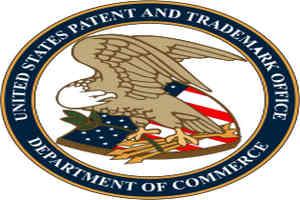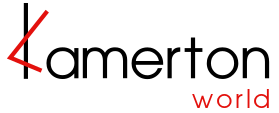
The Leahy-Smith America Invents Act passed in September 2011, did not eliminate the major flaws in the patent system that significantly reduce the effectiveness of intellectual property.
Ed Black, President of the Computer & Communications Industry Association (CCIA) stated, "This Act has changed some things for the better and some things for the worse, but it has not addressed the major problems. Too many low-quality patents are being issued. For 10 million U.S. patents, far fewer innovative ideas are invented".
In an interview with «TechCrunch», Google senior vice president Kent Walker said that patents now only hurt innovations, not incentivize them. A wave of lawsuits has swept the computer industry. Today, this is a business in which older corporations often survive at the expense of their younger competitors' innovations. Reform is likely necessary. But Kent Walker did not say what reform should be.
The purpose of the patent system is to increase productivity and development of the economy. The possibility of patent protection encourages inventors and companies to spend effort and resources on creating inventions. The greater the amount of protection, the greater the incentive. However, the patent system has a downside. The more patented technical solutions, the more difficult and expensive it is to utilize them, and the less productivity and development of the economy.
Among millions of patents, it is very hard to find the right solutions. In each product, tens and hundreds of patents can be used. For each used patent, a manufacturing firm has to find its owner, negotiate with him, and buy a license from him.
The rapid development of new technologies and industries increases the annual number of new patents. The Patent Office is unable to review hundreds of thousands of patent applications. Therefore, the average time to grant patents is three years.
With the huge number of patents, it is very difficult to ascertain the patent purity of new products, i.e. the absence of any patents that protect the technical solutions used in these products.
These problems are aggravated by the fact that many patents are registered in patent funds of other countries and are written in foreign languages.
Moreover, the number of patents is increasing in developing exotic countries.
This increases the probability of losses from future claims of certain patent owners and increases the uncertainty of business projects for investors.
Therefore, there is an urgent need to establish patentability criteria that will prohibit patenting of low-quality technical solutions.
This will reduce the number of patents and facilitate the functioning of the patent system.
The U.S. Patent Law does not regulate the format of claims and allows for arbitrary description.
This makes the work of inventors easier but makes it much more difficult to interpret technical solutions unambiguously in litigation of conflicts between their users and patent owners.
Therefore, the patent system should be such that the protection of technical solutions is not overly broad, ambiguous, and easy, and that productivity and development of the economy reach optimal values.
All corporations and companies have an interest in the creation and operation of such an optimal system. Because they use third-party patented inventions and own patents. They are interested in minimizing patent conflicts, which are detrimental to all participants.
In the article by M. Panteleev "The condition of protectability – inventive step" («Intellectual Property», #1-2, 1996), the practice of application of this criterion was analyzed.
The criterion «inventive step» establishes that the invention must differ from known analogs to a sufficiently large extent. Thus, this criterion by definition includes the criterion of «novelty». Therefore, the application of the «inventive step» criterion eliminates the necessity and expediency of applying the «novelty» criterion.
Also, the author of the article pointed out that the «inventive step» (non-obviousness) criterion is subjective in principle. The recommended methods of its application using indirect criteria cannot sufficiently eliminate this defect.
The subjectivity of assessments under this criterion causes their dependence on the psychological properties and knowledge of judges and examiners who resolve patent conflicts. This significantly reduces the effectiveness of protection and use of inventions and causes new conflicts and damages.
In the article "Patent Protection in Georgia" («Intellectual Property», #5-6, 1996), the author pointed out the tendency to abandon this criterion. I also consider it advisable to abandon its use. I recommend applying a different, more effective criterion.
The purpose of every invention is to create new useful properties of products and/or to eliminate their harmful properties.
New technical solutions create new properties of products.
All effective inventions create qualitatively new properties of objects relative to known devices, processes, and substances.
I will give examples.
A radio-transparent lightning rod arranged from a dielectric tube, inside of which the gas is rarefied.
Qualitatively new property of the product is the ability to change from the state of a radio-transparent insulator to the state of a conductor under the condition of a large electric field strength and to pert the charge of the protected object into the atmosphere.
An abrasive wheel to which an electric charge is transferred to reduce soiling.
The property is the ability to repel formed particles by an electric field.
Transportation of hydrophobic ore in a wagon, at which 5% of powder from this ore is added to it to prevent its freezing.
The property is the ability to prevent the penetration of water into the ore volume in the absence of additional devices and foreign substances.
The presence or absence of qualitatively new properties of invented devices, processes, or substances can be established or refuted objectively and formalized to a sufficient degree.
Therefore, instead of the criterion of «inventive step» (non-obviousness), I consider it appropriate to use the criterion of the creation of qualitatively new properties of the inventions’ objects.
According to this criterion, I propose to change the definition of «Invention».
Invention is a description of some artificial device, process, or substance possessing a qualitatively new property in relation to known products, processes, and substances.
That is, the creation of a qualitatively new property is a necessary and sufficient condition for an invention.
Any technical solution that creates such a property is an invention, and a solution that does not create such a property cannot be recognized as an invention.
Descriptions of the qualitatively new properties created should be introduced in the claims.
Only descriptions of those properties of the subject matter of the invention and its constituent parts which cause the claimed qualitatively new properties of the subject matter of the invention should be included in the claims.
This will simplify and facilitate an unambiguous understanding of the meanings of the inventions and reduce the likelihood of different interpretations of them.
The claims should contain descriptions of :
The kind of the invention object;
The general species-forming properties of the invention object and its known analogs;
Qualitatively new properties of the invention object;
The invented properties of the object, the action of which causes its qualitatively new properties;
Mechanisms by which the action of the invented properties of the object causes its qualitatively new properties.
Such rules will promote the use of intellectual invention technologies, as well as neural-network technologies.
The current principle of unrestricted sources of information that impugn the novelty of inventions increases the uncertainty of the validity of patents. Therefore, I think it is reasonable to limit the scope of information sources to patent funds only. (Under this condition, it would be possible to abandon the use of the metaphorical phrase "prior art" in the patent law.)
In inventions of applications of known devices, processes, and substances for new purposes, inventions of new devices, processes, and substances in which known devices, processes, and substances are used actually arise. Therefore, there is no necessity and expediency for the existence of a separate type of inventions – «application for a new purpose».
The conclusion of the state expert examination on the patentability of an invention is perceived as a very convincing argument in court proceedings.
But it is not the absolute truth and guarantee of the patent protection.
It is only the opinion of the state expert. Its bureaucratic status does not ensure its absolute reliability. It can be challenged and overturned in court.
The exaggerated importance of the state expert examination in the current law and in the mass consciousness of patent lawyers is a vestige of the authoritarian society.
Many cases of incompetence and abuse of state examiners are known.
The state examination lasts for a very long time, several years.
State examination would make sense if the state would be obliged to compensate patent owners for losses in cases when the conclusions of the examination are recognized as erroneous and patents are canceled.
In many countries, the establishment of a delayed state examination procedure confirms its ineffectiveness.
For these reasons, I believe that the declaratory registration system of patenting is optimal.
The criteria of «usefulness» and «applicability» are subjective and based on the current state of technology and societal needs. Inventions deemed useless and inapplicable may become useful and applicable in the future. Therefore, I consider the application of these criteria to be inappropriate. (Registration fees are a sufficient deterrent against the registration of meaningless inventions by graphomaniacs.)
Computer algorithms and biological objects are qualitatively different from tangible technical objects. Therefore, their patent protection has its own specificity and should be regulated by separate laws.
The proposed changes in patent law will significantly reduce the number of patents for inefficient inventions. They will simplify the patenting and use of inventions, reduce the number of conflicts, and facilitate their resolution. This will greatly increase the economic efficiency of the patent system.
Е. Gershman
Published May 17, 2012 on www.gosbook.ru/node/54740
___







